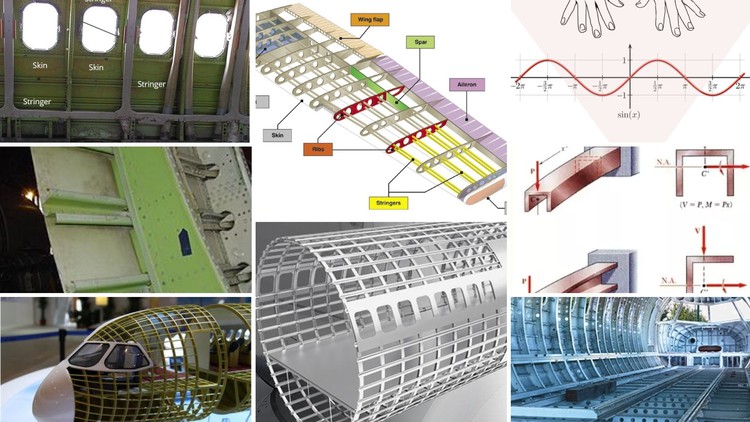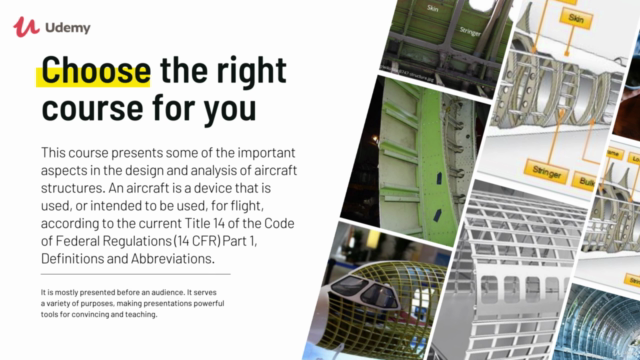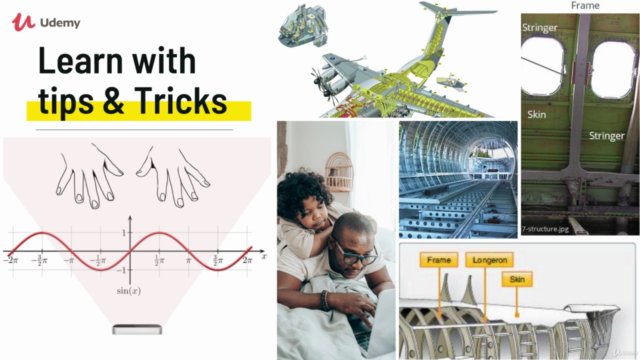Advanced Aircraft Structures for Engineers
Understand Aircraft structures easily
4.28 (94 reviews)

2,191
students
2 hours
content
Apr 2021
last update
FREE
regular price
What you will learn
The students will be able to perform unsymmetrical bending with skew loads.
The students will be able to gain knowledge about shear center.
The students will be able to analyse torsional effects on thin walled open and closed section.
The students will be able to analyze and determine stresses acting on the Wagner Beam.
The students will be able to study the importance of structural idealization
Screenshots




Related Topics
3939460
udemy ID
3/26/2021
course created date
4/17/2021
course indexed date
Bot
course submited by